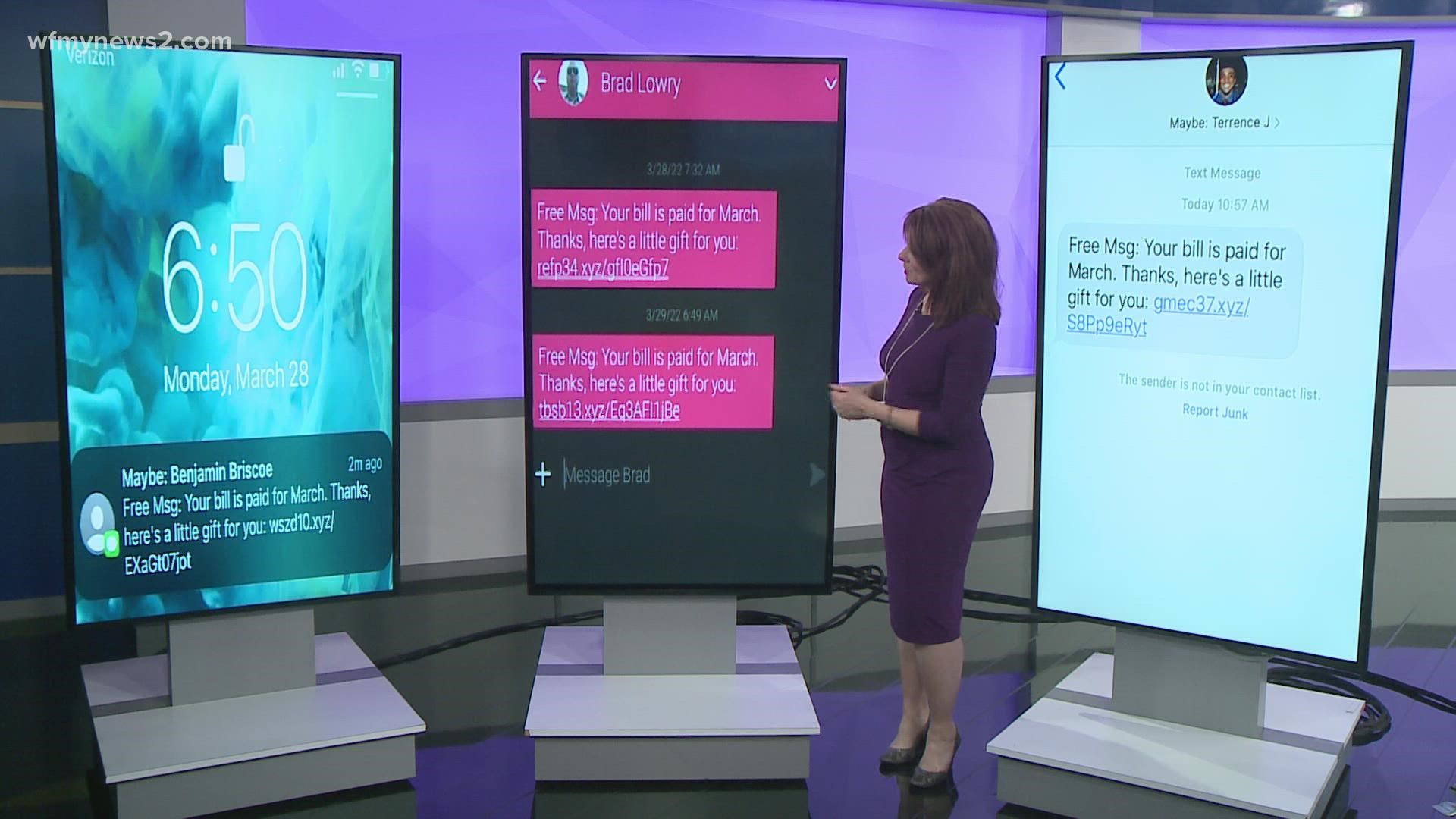GREENSBORO, N.C. — 2 Wants To Know, did you get this text? Three folks from work got it. Ben, Brad's, and Terrence's messages all look the same:
Free msg: Your bill is paid for. Thanks, here's a little gift for you. (insert link here)
Yes, it's a spam text, but what makes it so different is it came from their own numbers.
Verizon customers are the ones seeing this text. The carrier said there's been an increase in these texts. Verizon urges everyone not to click on any of the links and said it's working to block the messages.
So, how is it that you are calling yourself? It's a technology called spoofing. Scammers use it to trick you...with calls, emails, and texts.
A tech expert told 2WTK, Scammers are very adept at making their emails look like they're coming from a source, Paypal, your bank, just like people know if you get a call on your phone from the FBI or the IRS, chances are, it's not. This is spoofing, where scammers make their calls or emails look real to convince you to do something like click on a link or number on a gift card. it's all to separate you from your money.
STOP. Whenever you get a call, email or text -- take a minute. think about it. Go to the source, that could mean you log into your account, call the number on the back of your card-- before you give out any information.
Here are five things to look for to determine if a text message is real or fake:
Phony phone number: Scammers often try to impersonate well-known companies or the government in text message scams, but they’ll use a phony phone number.
The scam text message below claims to be from California’s Employment Development Department (EDD), but it comes from a random phone number that doesn’t register on caller ID and has a Minnesota area code for a message about California. Scammers might also use a technique called “neighbor spoofing,” where the message appears to come from a phone number with your local area code. You can always search for the number using a reverse phone lookup tool to find out if it’s real. If there are no results, that’s a red flag, Rexxfield, a cyber investigation services company, says.Unsolicited message: You might receive a text message that claims there was a problem delivering a package to your home. You should first ask yourself, “Am I expecting a package?” If the answer is no, you’re likely dealing with a scammer.
Amazon says scam texts claiming to be from the company will often include an order confirmation for something you didn’t buy or an attachment to a “confirmation.” Don’t click a link in the text – instead, go to Your Orders on Amazon’s website to see if there is an order that matches the details in the message. If there isn’t one, the message didn’t come from AmazonUrgent tone or excitement: Scammers will often use an urgent tone or try to create a sense of excitement in their text messages. They might claim that you’ve won a prize, promise free gift cards or coupons, or warn you about an account allegedly being deactivated.
In our example below, the scammer claims that you’ll receive $500 if you sign up for a Whole Foods research project.Spelling and grammar errors: A legitimate company will typically hire professional writers and editors for business communications. If you notice strange phrasing, or spelling and grammar errors, a scammer is probably sending the message, the BBB says.
In our scam text example that claims to be from the California EDD, there are punctuation issues and the wrong words are capitalized.Suspicious links: Some scam text messages may ask you to click a link to claim a gift or learn more about an issue. The link might take you to a spoofed website that looks real but is actually fake. Scammers can then steal your username and password if you log in.

